Air handling units are efficient, reliable and durable. But! They are expensive.
Therefore, many homeowners, faced with a lack of clean air in the apartment, try to solve the problem on their own. They build forced ventilation with their own hands. The seemingly simple task “how to make forced ventilation correctly” is fraught with many tricks. It is not enough just to pick up powerful fans and lay inconspicuous air ducts. It is required to calculate all the elements of forced ventilation, their correct placement and layout.
- About forced ventilation
- Forced ventilation device
- Selecting a forced ventilation scheme
- Forced ventilation calculation
- Frequency calculation
- Area calculation
- Calculation of the area of ventilation ducts
- Air distribution
- Selection of equipment for forced ventilation
- Place of installation
- Air balance
- Forced forced ventilation with your own hands
- Forced exhaust ventilation with your own hands
About forced ventilation
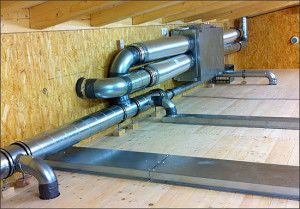
The air flow generated by mechanisms and supplied to the room is called forced ventilation. In the direction of air movement, it can be:
- supply;
- exhaust;
- supply and exhaust.
By air delivery method:
- with air ducts;
- without air ducts.
Many apartment owners limit themselves to forced ventilation, when the air supplied by the fan creates an increased pressure. This enhances the displacement of the exhaust air through the centralized ventilation ducts.
Another way to improve air exchange is forced exhaust ventilation. The outlets of ventilation ducts in the kitchen, toilet and bathroom are equipped with exhaust fans. They create a rarefaction of the air. To compensate for the shortage, air enters the apartment through the vents or air inlets.
On the upper floors of high-rise buildings, the above methods rarely fully satisfy the need for fresh air.
The most effective forced supply and exhaust ventilation system. In which both the supply and the extract of air are provided by mechanisms. Assembling it yourself is not so difficult, especially if you use our advice.
Forced ventilation device
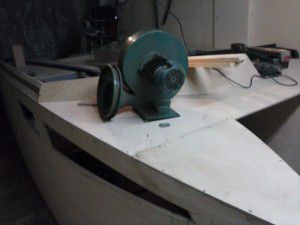
A forced ventilation device in an apartment or cottage is a combination of elements for various purposes, which all together perform one task:
- Air intake grilles. They protect the air ducts from mice, insects and debris. Fastened from the outside of the air ducts;
- Filters. They clean the air from dust and fluff. Especially fine ones precipitate even plant pollen. There are many modifications of filters of various shapes and degrees of purification;
- Air valves. Needed to adjust the air flow supplied from outside. In the cold season, the system is protected from icy gusts of wind;
- Fans. Create a constant air pressure in the ventilation ducts;
- Sound absorbers. These are materials that absorb the noise of mechanisms and aerodynamic noise in air ducts;
- Air heaters. They heat the supply air in winter;
- Ventilation ducts or air ducts - pipes through which air moves;
- Automatic block. Making forced ventilation in a private house with your own hands, as a rule, this unit is neglected. Automation controls the system, turns on and off fans, air heaters.The most advanced modifications change the speed of the blades.
Selecting a forced ventilation scheme
- Combined. With this system, forced draft is combined with natural air supply or vice versa. The most widespread ventilation device in an apartment or private house. It is installed quite simply, does not require special maintenance. We have already mentioned the shortcomings above.
- Forced supply ventilation with cooling requires the introduction of an air conditioner into the system. Such equipment is installed directly on a riser or a private house; it is quite expensive and cumbersome.
- Forced supply ventilation with heating air. The easiest way to organize it is to install a recuperator. It will save energy costs by using the heat of the exhaust air. The downside is that the recuperator is quite expensive.
- Supply and exhaust forced ventilation with recirculation. The exhaust air is filtered, partially mixed with the outside air and returned to the room. Such a device for forced ventilation is quite difficult, therefore, only experienced craftsmen undertake to do it in an apartment with their own hands.
Forced ventilation calculation
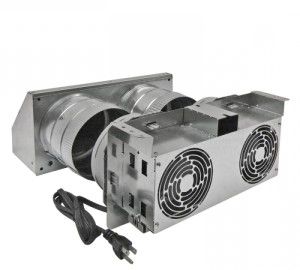
Having thought of making forced ventilation in a private house with your own hands, you should first carry out calculations. Quite complex calculations are required for forced supply and exhaust ventilation:
- Performance;
- Power and number of fans;
- Noise level;
- Air duct section;
- Power and types of auxiliary devices: heaters, recuperators.
Before doing forced ventilation, it is important to carry out the calculations correctly.
Frequency calculation
This is one of the basic quantities used when calculating a forced ventilation system. The air exchange rate shows how many times the air in the room should be changed in 1 hour. For example, the multiplicity "2" means that the air will change twice in an hour.
Air ratio table according to SNiP
| Purpose of the room | Winter temperature | Exhaust air volume or multiplicity |
| Outflow | ||
| Bedroom, living room | 20 | 3 cubic meters of air per 1 square meter of living space of the room |
| Shared bathroom | 25 | 25 cubic meters per hour |
| Restroom | 18 | 25 cubic meters per hour |
| Bathroom | 25 | 25 cubic meters per hour |
| Pantry | 18 | 1.5 (multiplicity) |
Area calculation
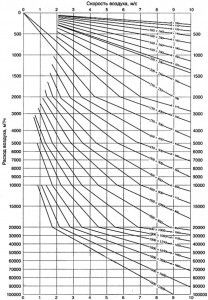
Such a calculation is suitable for home craftsmen who decide to assemble forced ventilation of a private house or apartment with their own hands. Calculation of forced ventilation averaged for rooms with a height of about 3 meters: air flow per 1 sq. meter of total area is 3 cubic meters per hour.
Calculation of the area of ventilation ducts
The cross-sectional area of air ducts is also very important for the efficient operation of a forced ventilation system. The size of the section is influenced by the volume and velocity of the exhaust air.
Now we are choosing with our own hands which type of hood: forced or natural, it is better for ventilation. In the first case, the air speed should be about 3.5 m / second, in the second - about 1.5 m / second.
Use our diagram to find the right cross-sectional area for your ducts.
Air distribution
The efficiency of the forced ventilation of a self-assembled apartment is often reduced due to illiterate air distribution.
With a well-planned air distribution in a house or apartment, there are no “dead zones” with stagnant air. The lower the air exchange rate, the higher the likelihood of this phenomenon.
For the supply to the living space, install 2 supply distributors on the side of the outer wall, and on the opposite wall 1 or 2 exhaust distributors.
The best air diffusers for a forced ventilation system not only quietly deliver air into the room, but are also invisible. The simplest distributor is a metal plate drilled for a "colander".Having thought well and calculated, you can make holes directly in the duct.
You can hide the air inlets behind curtains, under a sofa or wardrobe, between ceiling levels. Exhaust grilles must be placed as high as possible.
The ratio of inflow and exhaust depends on the nature of the room and the lifestyle of the household. For example, in a living room for smokers, the exhaust fan should be more powerful than the supply fan. Thus, a vacuum is created and smoke does not penetrate into neighboring rooms.
The same principle is used to calculate the ventilation of the kitchen and other rooms with a high level of humidity.
Selection of equipment for forced ventilation
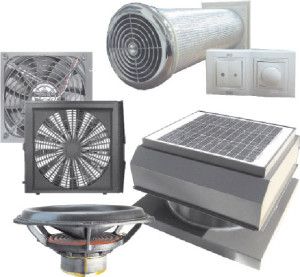
Getting started making forced ventilation in a private house with your own hands, you can choose one of the options:
- Inexpensive systems assembled from disparate components;
- An improved forced ventilation system in the apartment, often containing a recuperator.
Most home craftsmen with the skills stop at the second option. It is better to overpay for high-quality equipment and install it, saving on installation costs.
Place of installation
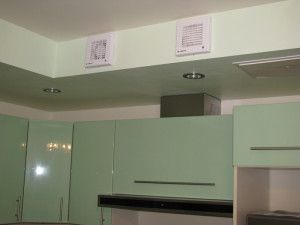
The place for the ventilation unit should be as far as possible from bedrooms, children's rooms and rest rooms.
The options are:
- Kitchen;
- Hallway;
- Balcony.
It is much easier for the owners of private houses, they also have attics. And the neighbors are far away.
Equipment with good sound insulation is practically inaudible behind 2 closed doors.
Air balance
When calculating forced ventilation, a positive balance should be observed. This means that the supply air volume is greater than the extract air volume.
The main rule: air moves from clean rooms (bedrooms, living rooms) to dirty ones (kitchen, bathroom).
If it is customary in the house to tightly cover doors with baseboards, you need to equip them with grilles for ventilation. Then the air can circulate freely from room to room.
In closed rooms, air is supplied and removed mechanically.
The ratio of inflow and exhaust in rooms for various purposes.
| Purpose of the room | Innings | Outflow |
| Living room | 200 cubic meters / h | 200 |
| Bedroom | 250 cubic meters / h | 200 |
| Corridor | — | 50 |
| Kitchen | 100 cubic meters / h | 150 |
| Combined bathroom | 50 cubic meters / h | autonomous |
| Total (minimum required) | 600 cubic meters / h | 600 |
Forced forced ventilation with your own hands
you can assemble a completely professional ventilation system with your own hands For the convenience of assembly and fastening, it will be necessary to replace the window glass unit overlooking the balcony. The new one should be 20 cm lower, and the resulting hole should be closed with a PPU insert.
- We carefully cut a 125 nipple into the polyurethane foam. If you do it correctly, you don't even have to seal the insertion point.
- Farther from the PPU insert, we install the FVK or FV filter at 125. The window on the loggia will serve as an air valve.
- We connect the filter with an NK type electric heater using a semi-rigid hose. The distance between the filter and the heater can be any. Place the heater away from combustible surfaces or insulate its casing. The case can heat up to 70 degrees, and the cover will have to be removed periodically.
- Mount the fan at a distance of 250 mm from the electric heater. To make it work silently, insert it into the box and fill it with polyurethane foam. Before doing this, secure the two sections of the duct and provide for the electrical connection.
- Next, in the apartment with our own hands, we fix a direct air duct for forced ventilation, where the air flow will be leveled, and we install a silencer. 60 cm will be enough, but if the place is better than 90 cm.The total length of the forced ventilation system, assembled with your own hands, will be about 150 cm.
- The air supply to the rooms will be through the ducts, into which the gratings of 10 x 15 cm are cut, at least three for the entire forced ventilation system in the apartment.If the length of the duct is more than 5 m, a galvanized pipe should be used.
- We automate the forced ventilation system in the apartment. To do this, we connect the temperature controller according to the diagram using a three-core cable. All electrical equipment is supplied with diagrams, which must be used. In the middle part of the duct, no closer than 1.5 meters from the electric heater, a duct temperature sensor is installed. The equipment is powered from a standard electrical outlet.
As you can see, it is not too difficult to make forced ventilation in the house. The scheme presented by us is suitable for a two-room apartment. Correctly done forced ventilation will work with an open window or a good exhaust hood. As an exhaust hood, it is enough to install a household fan in the ventilation grill of the bathroom with a power equal to the supply fan.
Forced exhaust ventilation with your own hands
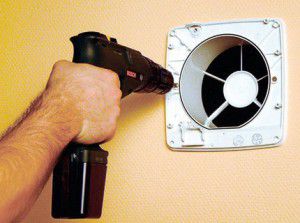
It is much easier to organize forced exhaust ventilation than supply ventilation.
The heart of the system is an exhaust fan. The most convenient semi-automatic ones with a hygrometer and a timer. They turn on in high humidity and turn off after a specified time.
The fan is installed at the outlet of the ventilation duct in the toilet or bathroom and is attached to the wall with dowels or self-tapping screws. A wire is supplied to the junction box, a switch is installed in a convenient place.
The cable can be laid in a specially hollowed-out groove in the wall or covered with a plastic box.
It is very easy to connect the fan to the mains, a diagram is attached to the device. If the fan is installed in a damp room, the connections are fixed with clamps, not twisted.
A video on how to independently make forced exhaust ventilation in the bathroom:

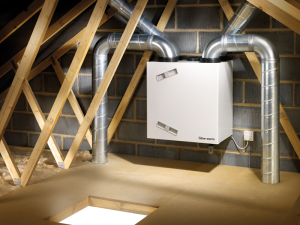
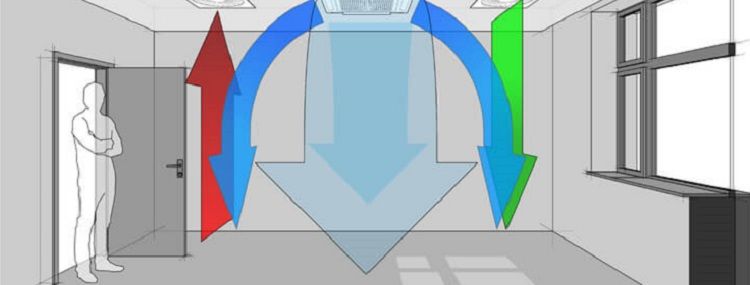

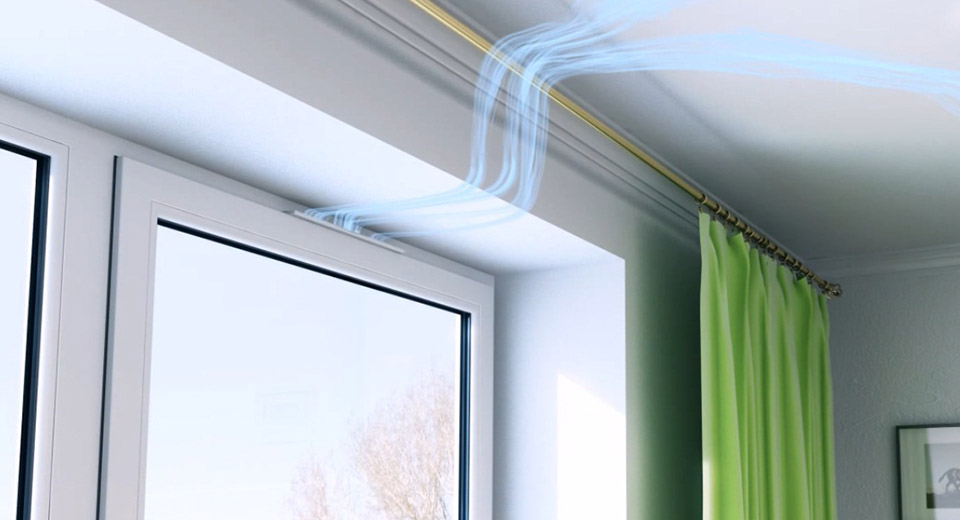
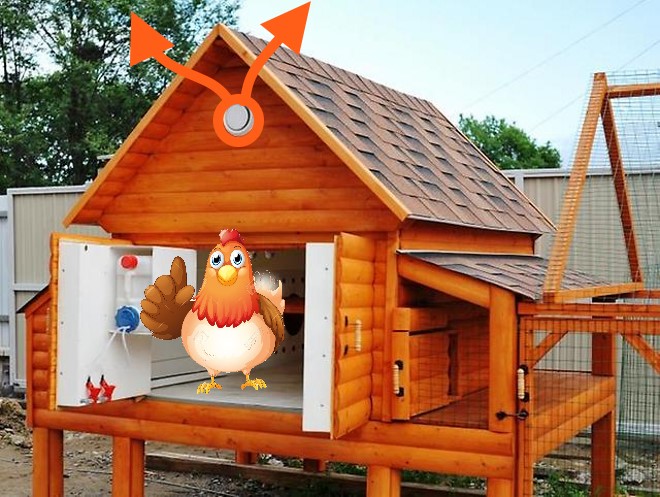
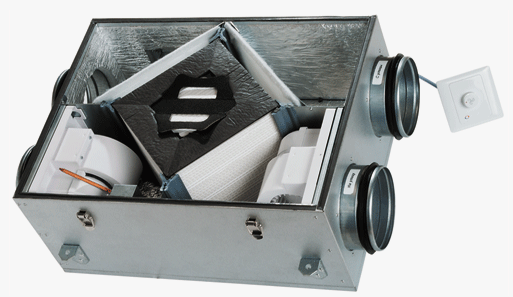

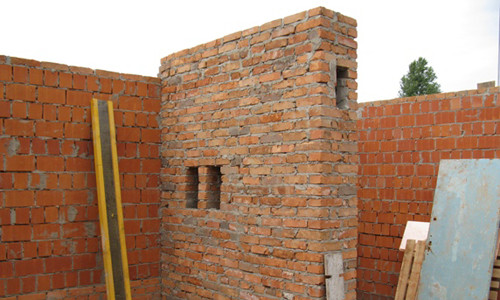
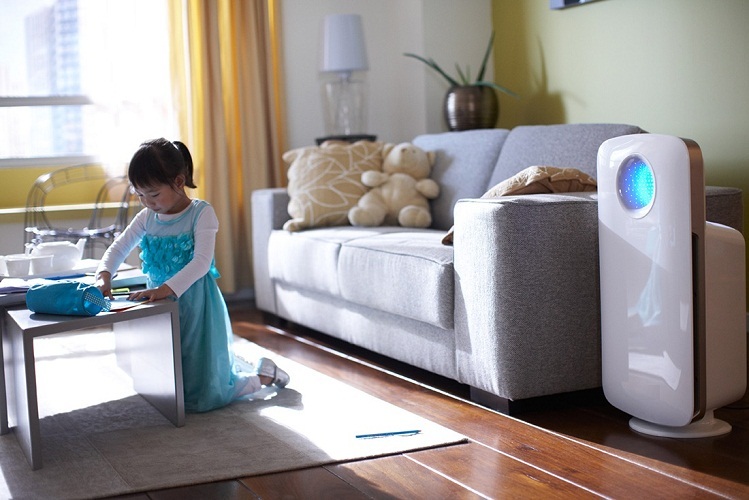
Good afternoon, please explain if it is possible to install the above ventilation systems in a wooden frame house and a bathhouse.
Hello, of course possible! You just need to take a specific room or bath and calculate the system specifically. In words or remotely, this cannot be done.
Will the ventilation work if you open a window in one room and turn on the exhaust fan in the bathroom? TWO ROOM APARTMENT